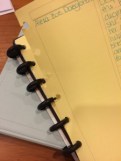Trillian Anderson's Blog, page 5
September 23, 2015
Book Review: Cry Wolf by Patricia Briggs (Alpha & Omega #1)
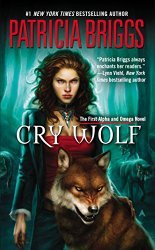 Cry Wolf is the first book of the Alpha & Omega series and also one of my favorite novels. I’ve owned it multiple times, and I keep coming back for more each and every time I read it. It’s technically the second story in the set. The first title is a novella in a collection, On the Prowl. This novella is actually my favorite of the stories, no matter how short it is.
Cry Wolf is the first book of the Alpha & Omega series and also one of my favorite novels. I’ve owned it multiple times, and I keep coming back for more each and every time I read it. It’s technically the second story in the set. The first title is a novella in a collection, On the Prowl. This novella is actually my favorite of the stories, no matter how short it is.
Cry Wolf tells the story of Anna, a woman who was forced to become a werewolf against her will. She begins the novel starting a new life with Charles, an infamous werewolf with the job of enforcing pack law.
The novel pursues the tale of Anna’s new life as a werewolf, her mate, and the existence of a woman who could turn a living legend into a monster. Charles and Anna have to work together to put a stop to a danger to all werewolves.
What I truly loved about this book was the sense of discovery and newness of the world. Patricia Briggs does a stellar job of introducing readers to her take on Earth, I really enjoyed the subtle weave of reality and magic, which made it really easy to get absorbed in Anna’s story. I really enjoy her characters, especially Charles.
The only thing I dislike about this novel is that the first story isn’t included in it and can only be found in a separate anthology; so much that happens in the pre-story is referenced, so if you go into Cry Wolf without having read the story from On the Prowl, it feels a little flatter than it should. So, I really recommend grabbing a copy of On the Prowl before trying Cry Wolf.
Good read, and an urban fantasy staple I return to time and time again.
 As a bonus commentary, all of the Alpha and Omega novels include serious themes, only a light amount of sex, and the discussion of issues for both men and women are take place, giving the stories a real edge to them. Briggs doesn’t skirt around important issues including rape and violence, which I appreciate.
As a bonus commentary, all of the Alpha and Omega novels include serious themes, only a light amount of sex, and the discussion of issues for both men and women are take place, giving the stories a real edge to them. Briggs doesn’t skirt around important issues including rape and violence, which I appreciate.
Happy reading, book lovers!
I totally used affiliate links in this post.
September 22, 2015
Hunting for Good Books: Judging Books by their Covers
Humans are a judgmental species. In far too many circumstances, we determine the value of a person, place, or a thing by its appearance alone. Niagara Falls is awe-inspiring due to its vast size and almost ethereal beauty, yet it suffers from judgment like anything else. The Canadian side simply has the better view.
Books are no different. Many book lovers will ignore covers in the search to find the next greatest read, but in actuality, covers sell books. People are drawn to things with a visual appeal. In so many cases, the author has very little to do with the selection of their cover, although that is changing more and more each day.
We judge books by their covers… and with so many new titles releasing every day, the cover has become a key factor in the sale and consumption of novels. It’s an unwanted fact. Book lovers love books, and a bad cover can hide an amazing novel. Book lovers don’t want to judge books by their covers.
The sheer number of books sold each and every day, in a way, necessitates this tendency. You have enough money to buy one book. How do you pick the perfect book? There are so many factors in this, but for many, covers make a huge difference.
first impressions matter
When shopping on amazon or in a brick-and-mortar store, I grab books in a certain fashion. I don’t really even think about it much, either–I have been reading for so long I automatically go through a mental checklist when hunting for my next read.
Catchy Title or Known Author
Cover
Description
Sample Read
While the title and author are at the top of the list, it doesn’t hold much weight–not compared to the next three parts of my list. Title and author get the book into my hand, but the cover can return it to the shelf in a heartbeat. Why?
I judge whether or not a book will interest me based on the cover. If the cover is intriguing or has an element of something I like, the book remains in my hand. If it doesn’t, it goes back onto the shelf without me ever reading the description. That begs the question of ‘What do I look for?’
covers as a shopping tool
I sound harsh, but in reality, it doesn’t take much for me to decide to check out the description. Here’s a quick list of things that will get me to flip the book over and read the blurb.
Obvious Fantasy / Sci Fi elements. I like my genre fiction!
Nice, professional colors/art/layout. If it looks like Picasso vomited on the cover, I’m not going to be interested in the book.
Tasteful. I don’t want gratuitous nudity on covers–unless I’m buying a porn on purpose. I don’t want gross, either.
Horses, daggers, sharp or pointy objects, shinies. What can I say? These things interest me.
Pretty art. I’ll buy a book to display the cover if it’s that pretty–even if I never read the book.
Obviously, this is a subjective list… but every reader has their own tastes, and that’s a great thing.
In short, a cover needs to have an element of interest to me as a reader. Judging books by their covers lets me hunt down the type of book I want to read–it is a gateway to a whole new world. Covers are a great shopping tool… and some of my absolute favorite books I found by judging them by their covers.
I love books, but covers do influence me, and first impressions matter. Covers are my very first introduction to a book. Yet, no matter how much I love books, their covers still influence me. Do covers influence you? What makes you decide to walk away from a novel before you read the sample? Is it the cover, the description, or both?
 For what it’s worth, I judge books far harder on their description than I do on their covers. Ironically, I’m far more forgiving once I open a book and begin reading. If they hold me through the first ten minutes, I’ll usually finish unless the author trips one of my triggers. And yes, I am that girl who stands in the fantasy aisle in the book store flipping through the beginning of a novel. And yes, I am that girl who subconsciously will move out of your way so you can check out the books I’m blocking. I’m probably the reason the stores here have learned to put chairs around to keep book browsers like me out of the way…
For what it’s worth, I judge books far harder on their description than I do on their covers. Ironically, I’m far more forgiving once I open a book and begin reading. If they hold me through the first ten minutes, I’ll usually finish unless the author trips one of my triggers. And yes, I am that girl who stands in the fantasy aisle in the book store flipping through the beginning of a novel. And yes, I am that girl who subconsciously will move out of your way so you can check out the books I’m blocking. I’m probably the reason the stores here have learned to put chairs around to keep book browsers like me out of the way…
Happy reading, book lovers!
September 21, 2015
Author Interview: Jamie Wyman
Authors are readers, and Jamie Wyman is no exception. Slated on Sad Puppy’s list of authors ultra conservatives should never read, she has an interesting perspective on reading and writing. I’m pleased to have gotten a chance to sit down and have a talk with her. Here’s the discussion!
Trillian: Reading is a love of many authors. What sort of books do you love reading and why?
I’ve got a pretty geeky list. I love Jim Butcher’s Dresden Files series, Chuck Wendig’s Miriam Black series, pretty much anything by Christopher Moore. Neil Gaiman, Delilah S. Dawson (and her alter egos Ava Lovelace and Lila Bowen); the steampunk of Leanna Renee Heiber, Cherie Priest and Beth Cato; Allison Pang, Karina Cooper…. I could be here a while, but these are the ones that really push my buttons these days. Last books I read were LONDON FALLING and THESE SEVERED STREETS both by Paul Cornell.
I really dig urban fantasy. horror and speculative fiction. I think that’s mainly because those are where I find rich, resonant voices. That’s what really pulls me into a book. All of these authors that I’ve mentioned have got something in their pacing, their words, their voice, their characters that is just luscious and delicious. That is what hooked me. Good stories keep me coming back.
Trillian: Is there anything that bothers you about these books? What stereotypes ruin the reading experience for you?
I dislike the hetero-normative boy-meets-girl tropes in most modern romance or paranormal romance. I could never get into the role of a woman who’s usually hiding her intellect or interests in order to impress a guy. The departure from that in Ava Lovelace’s Geekrotica books (THE LUMBERFOX and THE SUPERFOX) was truly refreshing. Her characters are not cookie cutter tropes that seem to be every where in rom-com movies and books; they’re like me and my friends. And? Lovelace makes consent HOT!!
Which brings me to my biggest pet peeve in modern urban fantasy/spec fic: THE RAPE TROPE. So often authors (mostly male, but some female, too) use rape as a gateway to make their female main character earn her stripes, to prove that she is a Strong Female Character, or to make her “fall” so that she can claw her way back up. Or if the lead is male, a female close to him is raped to galvanize him against our villain (who, by the way, just became even worse because, dude, rape!) I hate how rape, sexual abuse or assault are treated so flippantly, and the aftermath of that trauma is not given the weight it’s due.
Trillian: When you are writing your novels, how do you address the issues you find with mainstream urban fantasy? How have these issued challenged and changed your writing?
I make sure my characters are three-dimensional people that a reader can connect with. I also try to write the lessons I wish media would tell in terms of gender roles and give those living alternative lifestyles a place to see themselves.In terms of the the rape trope? Well, I try to give EVERY trauma I write–be it a character who has just killed for the first time, or someone who is living through the hell of abuse– the time and attention it deserves. People live through that. People have to cope. I try to be sympathetic to all of the facets of that trauma.
Basically, at the end of the day, I try to write deep, complex people rather than two-dimensional names on a page.
Trillian: Homophobia in fantasy is an issue many struggle with. Bisexualism plays a large part in your novels. Was your choice to have a bisexual main character a happy accident or deliberate choice? Why?
I wouldn’t say bisexualism plays a large role in my novels so much as I write material that is inclusive and sex-positive. I myself am bisexual and I see a lot of erasure of bisexuals in media. Often people will treat a character as gay or straight solely based on the gender/orientation of the current/last person that character was with romantically. Dude, we’re still bisexual regardless of who we’re currently with. And it happens in movies, books, television… bisexuals are seen as fence-sitters, greedy or confused rather than people with a legitimate orientation. It’s something I’m tired of seeing and refuse to perpetuate.
As far as Catherine Sharp, the lead in my Etudes in C# series, being bisexual; that was something that grew organically when I was outlining the original novel. I didn’t set out to specifically write a bi character. It just worked out that way and when it did, I ran with it rather than try to shove her into the more socially acceptable straight label that she clearly wouldn’t have fit in anyway.
Trillian: Writing about social issues can be difficult–what problems have you faced in your effort to pursue themes many consider controversial?
I think there’s a fine line between writing about social issues and being on a soapbox. So, I don’t set out to change hearts and minds. I’m writing about an experience that a person is having. Their sexual identity, their occupation, etc, all of that plays into how they will react to that situation and what the experience will do to shape them. So, when I put a bi character in a novel, or if I write a story where the main character discovers polyamory, or if I write about a soldier dealing with the trauma of killing for the first time, I make the character the focus of the piece, not the issue. The experience they are going through, showing my readers what that person is going through is far more effective storytelling than telling a reader how to think or feel. Books? They’re a great place for a person to experiment with different ways of thinking because it’s all in your head and no one can judge you. If a reader can connect with a character living through something on the other side of their own beliefs….that’s where compassion is born. And if we can breed compassion through storytelling…maybe there’s hope for the world.
Trillian: Homophobia is one of many social issues in fantasy fiction. Fantasy has been dominated by male authors for a long time. Has your experience as a woman writing fantasy fiction changed how you perceive books–and write them?
I’ve been very lucky that the readers and authors I’ve met at conventions have been amazing people who don’t, in general, treat me any differently than anyone else on a panel. Professionally, my agents and editors have never made my gender an issue. On the rare occasion that a person in an audience has been patronizing to me when I’m on a panel with all men….well, my next answer usually is enough to solidify that I belong on that panel.
I did end up on a Sad Puppy list of SJW authors to never read. I look at that as a badge of honor, really.
And no, I don’t change the way I’m going to write to either compensate for or excuse my gender.
It also doesn’t hurt to have a gender neutral name.
Trillian: What is your favorite book? Why?
Hands down I do not have an answer for this. I’ve got a few that are books that if my house was burning down I would take it with me, but choosing among those? Can’t do. Those books are The Mists of Avalon by Marion Zimmer Bradley (I read that at least once a year!) , Fool by Christopher Moore, Lamb (also by Christopher Moore), and Sacre Bleu (also also by Christopher Moore…. hm… pretty much anything by him now that I think about it.)
Trillian: You’re working on a kickstarter to help fund your next book. Please tell us about the book!
UNINVITED is the third book in my urban fantasy Etudes in C# series. It’s technomancer Catherine Sharp’s birthday and she’s got a strange present waiting on her doorstep. Marius is back and he’s in trouble. The lords of several underworlds are after the wayward satyr, and with multiple supernatural factions expending all of their resources to trap him, he needs help that can only come from the aid of a “bigger fish”. Things only get worse for Cat when she discovers that the Sileni, an ancient order of satyrs, want to get to Marius with almost as much ruthlessness as those who want to kill him. Family intrigue, seething deities and desperate zealots make helping Marius nigh impossible. There’s also his personality to contend with.
Trillian: If you could send any current author (still living) back in time, which author would you send back, why would you send them back, and what would you hope their writing would accomplish in the era you’ve send them back to?
Most authors I’d send back I enjoy too much to lose, so I’d have to have a way to get them back. Maybe I’d send Lou Anders back to the time of the Vikings so he could experience some of the world his Frostborn uses. Or Paul Cornell back to the 1940s…. but that’s mainly so I can take his place and write for Doctor Who. 
Thanks for having me!
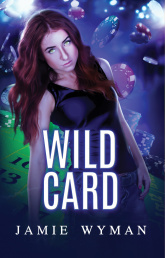 WILD CARD (Etudes in C#, No. 1) – It was bad enough working a dead-end tech support job, but for Catherine Sharp, the real hell is being owned by Eris, the Greek Goddess of Discord. Since that fateful day almost 10 years ago, Cat has performed random tasks–most of them quasi-legal–for the goddess in her free time in hopes that she’ll earn her soul back.
WILD CARD (Etudes in C#, No. 1) – It was bad enough working a dead-end tech support job, but for Catherine Sharp, the real hell is being owned by Eris, the Greek Goddess of Discord. Since that fateful day almost 10 years ago, Cat has performed random tasks–most of them quasi-legal–for the goddess in her free time in hopes that she’ll earn her soul back.
When Coyote, the Native American trickster himself, claims to have won her own soul in Mayhem’s weekly poker game, Cat decides to get in on the action. With five sneaky gods upping the ante, Cat will need to find a way to collect the winning chips that could save her soul.
Marius, a snarky satyr with his own debt to Eris, might finally come in handy for something. If they play their cards right and work together, Cat and Marius may just get their freedom back. Assuming they don’t kill each other first.
Jamie on the Net
Support her Kickstarter or Patreon | Follow her on Twitter | Friend her on Facebook | Check out her Website
Find info on her Kickstarter Fundraiser Event here.
About Jamie
 After a misspent adulthood pursuing a Music Education degree, JAMIE WYMAN fostered several interests before discovering that being an author means never having to get out of pajamas. (However, she can eat/spin fire, tell you a lot about auditioning to be a Blue Man, and read/write in Circular Gallifreyan.)
After a misspent adulthood pursuing a Music Education degree, JAMIE WYMAN fostered several interests before discovering that being an author means never having to get out of pajamas. (However, she can eat/spin fire, tell you a lot about auditioning to be a Blue Man, and read/write in Circular Gallifreyan.)
Jamie also works as an editor. In addition to freelance work, she works with sci-fi/fantasy publisher Dragon Moon Press.
As an author, Jamie’s favorite playgrounds are urban fantasy, horror and creepy carnival settings.
When she’s not traipsing about with her imaginary friends, she lives in Phoenix with two hobbits and two cats. She is proud to say she has a deeply disturbed following at her blog. Send chai.
September 20, 2015
I Love Office Supplies.
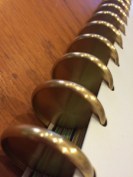 Within the pages of my journal lies a whole new world. In so many ways, it is like our own. I love speculative fiction for so many reasons. I enjoy taking the comforting familiarity of our Earth and transforming it into something new, into something to be discovered.
Within the pages of my journal lies a whole new world. In so many ways, it is like our own. I love speculative fiction for so many reasons. I enjoy taking the comforting familiarity of our Earth and transforming it into something new, into something to be discovered.
I love taking what we know and asking questions about it–and about what could be. What if the United States had a caste system–an actual one, such as those found in India and other Asian countries? While caste systems are fading from our reality, the symptoms of caste still exist, even in the United States. Some might say especially within the United States.
Speculative fiction has always been about testing boundaries and learning new things–about people, about science, about magic, and about ourselves.
What does this have to do with office supplies? Nothing, yet everything. In a technology-driven world, writing by hand is a dying art. There are students who are being negatively graded if they write in cursive. This happened to the child of an acquaintance of mine. She took a picture of the graded paper, which stated the teacher had already warned the student–my friend’s daughter–she wasn’t to write her name in cursive.
My beloved craft of writing by hand is quickly becoming the subject of fantasy and science fiction. I am writing this post because I feel like we’re losing touch with a very important part of our history. Two hundred years ago, owning ‘office supplies’ was an honor. It was a privilege of the wealthy and powerful.
It is now something we take for granted. I think because so many are educated we forget what a privilege having knowledge is. This has worked its way into the DAE PORTALS books. What if something–like knowing how to read and write–became a privilege of caste? What if the informal castes existing within the United States and other countries became a hard-set reality?
What if we circled back to how we had been in the past, where technology and caste systems replaced the need for good education? The DAE PORTALS books delve into so many of my questions about the nature of society and people. It’s ironic that I’m working with a society where the varying education levels don’t guarantee knowledge on how to read and write–or even paper at all. To create such a world, I use a lot of these supplies.
And I want to introduce you to them all.
paper, paper, paper!
 It has been discussed, at length, how a country can succeed without strong education backing it. I present to you a partial sheet of paper. Levenger makes it. It’s a heavy stock paper designed for use with their Circa disc system. The Circa system uses rings. The way the paper is punched allows users to rip out the sheets and replace them into the rings at will. To be able to do this, the paper stock has to be thick and strong.
It has been discussed, at length, how a country can succeed without strong education backing it. I present to you a partial sheet of paper. Levenger makes it. It’s a heavy stock paper designed for use with their Circa disc system. The Circa system uses rings. The way the paper is punched allows users to rip out the sheets and replace them into the rings at will. To be able to do this, the paper stock has to be thick and strong.
This is my paper of choice, as the ink doesn’t bleed through, the paper is durable, and I can reorder pages whenever I want. This is a big deal for me, because I move things around in my journals a lot. In a way, using technology to manage my notes would be smart, but nothing compares to the feel and smell of a fresh sheet of paper waiting for me to write on it. There’s zero difference in the value or quality of what I write, be it by hand or on the computer–but there’s a certain satisfaction in filling real pages and watching the ink dry as I work.
Long ago, the making of paper was considered the job of an artisan–someone with a high level of training and skill. Paper was valued more than many things–and those who could use paper were considered near the top of the education hierarchy. Oh, how things have changed. Now, a paper maker is considered someone of a lower tier job. The entire process, from lumber mill workers to paper producers, have faced a decline in prestige. The art of creating beautiful, durable paper is gradually going extinct.
The art of writing is, too. I go to an office supply store and look at the paper students are given to learn on, and I flinch. I won’t buy it for myself as a general rule. If I had children (I don’t) I wouldn’t buy that crap for them–even if it means I have to cut out play money for myself to give them good paper. Why?
It doesn’t last. It’s thin. It’s often coated in such a way pen ink won’t stick and pencil easily smears. I understand it’s cheaper to make paper this way, but children aren’t exposed to beautiful writing supplies. They’re introduced to cheap ones, and it lowers the appreciation of such a critical part of our education.
And yes, children are completely capable of appreciating nice things… if they’re taught those values.
It probably won’t be much longer until paper once becomes an artisan’s tool, created for lovers of the craft and few others. Digital isn’t bad, but there’s nothing quite like a good sheet of paper–and the skill to be able to transform a blank page into something filled with knowledge or creativity. Paper is a tool. Soon, it’ll once again become a luxury only the rich and educated can afford–or will want to afford. That’s a future I hope never comes to pass, although I expect it will soon enough.
I’m getting used to paying a lot of moment for good paper–and I now buy erasable ink so I can make the most of every sheet.
pens, pens, pens!
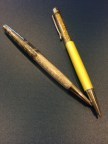 I have more pens than I do sense, and I’m not ashamed of this. From Swarovski to Pilot, if it’s a pen, I probably have one or have used one–or have lusted for it with every bit of my existence. Pens are a problem for me. I see a pen, and like a moth to flame, I am compelled to buy it. The pens I’m showcasing are my non-erasing go-to pens. These are pens I like signing documents with, writing permanent notes on any type of paper, and the pens I use when I write novels by hand in my various journals. (My go-to brands for novel-writing journals include Moleskine and Spice Box.)
I have more pens than I do sense, and I’m not ashamed of this. From Swarovski to Pilot, if it’s a pen, I probably have one or have used one–or have lusted for it with every bit of my existence. Pens are a problem for me. I see a pen, and like a moth to flame, I am compelled to buy it. The pens I’m showcasing are my non-erasing go-to pens. These are pens I like signing documents with, writing permanent notes on any type of paper, and the pens I use when I write novels by hand in my various journals. (My go-to brands for novel-writing journals include Moleskine and Spice Box.)
My go-to pen for novel notes is the Pilot FriXion line. You can read my review of these pens here.
Pens matter. Once again, a lot of people aren’t taught how to write. Real Me wrote a handy dandy guide for using pens, and it astonishes me how many people simply do not know how to hold a pen or use one properly.
Here’s a quick crash course on how to use a pen: The barrel should rest near the first knuckle of your middle finger. Your index finger guides the pen, and your thumb supports the pen. Your pen should rest where your thumb and hand meet. When you write, you should keep a light but firm hold on the pen. Clutching it really hard will make your hand hurt, and it won’t help you write neater, faster, or better. Writing uses two motions: your hand/fingers and your arm. Full wrist movement tends to cause muscle problems and pain, so avoid it whenever possible. (Artists are more likely to use full wrist movements because of the length of the strokes.)
If you’re new to writing, practice your letters. Take breaks frequently and stretch your hands. Depending on the type of pen you’re using, a 45 degree angle from paper to pen shaft works really well, but some pens require a higher angle. If you’re using a 45 degree angle, you’ll avoid clutching the pen and write in a more natural, thus painless, position.
Yes, it will make your hand ache when you first start to write. Take it slow, practice until your muscles twinge. Rest, stretch your hand, come back in a few minutes and write some more.
Quick list of things to be aware of:
Pain is bad. Muscle aches from exercise is good. Practice helps.
White-knuckling your pen is a sign you’re holding to too hard.
Holding pen straight up and down from the paper is a sign of clutching the pen.
Your hand should be relaxed when you write–just enough grip to keep your pen steady and firm.
Move your arm. Your wrist and arm are an extension of your pen. Wrist-only writing can hurt.
Posture matters. Good posture helps with all sorts of things.
Listen to your body. If it hurts to write for more than two or three minutes at a time–or any extended period of time, you’re probably doing something wrong. Unfortunately, penmanship isn’t being taught in schools any longer. Penmanship wasn’t taught much when I was in school… and that was over a decade ago. I learned by trial and error. I learned by practicing until I found a way that didn’t hurt.
journaling systems
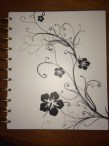 I mentioned way up top about using Levenger’s Circa system for my notes. Journaling systems are ways people can customize a journal for their needs. There are two I’m going to mention, and they’re rather incestuous, really. Staples Arc system is the same concept as Levenger’s Circa system. The Arc system is a cheaper version of it. The Arc system has a larger variety of journal covers, but the rings and paper are far inferior to the Circa system. The Arc system makes far better dividers than the Circa system.
I mentioned way up top about using Levenger’s Circa system for my notes. Journaling systems are ways people can customize a journal for their needs. There are two I’m going to mention, and they’re rather incestuous, really. Staples Arc system is the same concept as Levenger’s Circa system. The Arc system is a cheaper version of it. The Arc system has a larger variety of journal covers, but the rings and paper are far inferior to the Circa system. The Arc system makes far better dividers than the Circa system.
The two systems are completely interchangeable. I will often put a Arc cover over my Levenger covers for the designs and patterns while I use the Levenger Circa journal covers in the interior for durability and longevity. Yes, my important journals have two covers and backs. One for appearance, and one so the pages are properly protected.
A good journaling system, in my opinion, allows users to gather their thoughts and store them in such a way they can be easily found and relocated if necessary. That’s why I love the Levenger Circa system with the Staple’s Arc system augmenting it. Things stay organized and easy to find–just like in a computer.
This is the Circa system in action. The black rings are the standard variety supplied by Circa/Arc’s system; I actually replace them with aluminum rings made by Levenger for durability. The Arc rings are crafted of thinner plastic and are prone to snapping. They’re okay if you’re using them temporarily or do not access the journal often, but I really recommend either Circa’s standard black rings or investing in the aluminum rings. They’re well worth the investment.
If you’re after the hole punches, the Arc system hole punch is cheaper and cuts paper in the same way. I have a single-page hole punch from Levenger, and honestly, if you’re going to spend the money… buy the big one. It’s just substantially better and less of a headache if you’re punching more than one page a month. I often use the pre-formatted Levenger paper, but when I don’t… the single-page punch is obnoxious.
 In a way, I am fortunate my addiction to office supplies revolves around pens, papers, and things to hold them in. I also like artsy cups for holding my pens. I do appreciate paper clips, staplers, desk organizers… hell, I just love office supplies.
In a way, I am fortunate my addiction to office supplies revolves around pens, papers, and things to hold them in. I also like artsy cups for holding my pens. I do appreciate paper clips, staplers, desk organizers… hell, I just love office supplies.
How about you?
Happy reading, book lovers! And paper lovers, and pen lovers, and…

